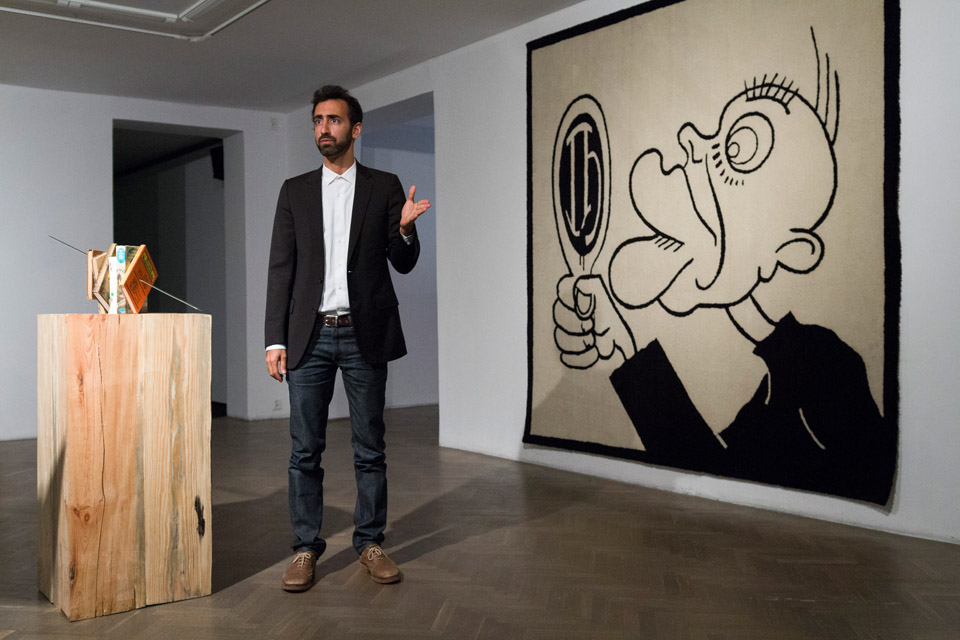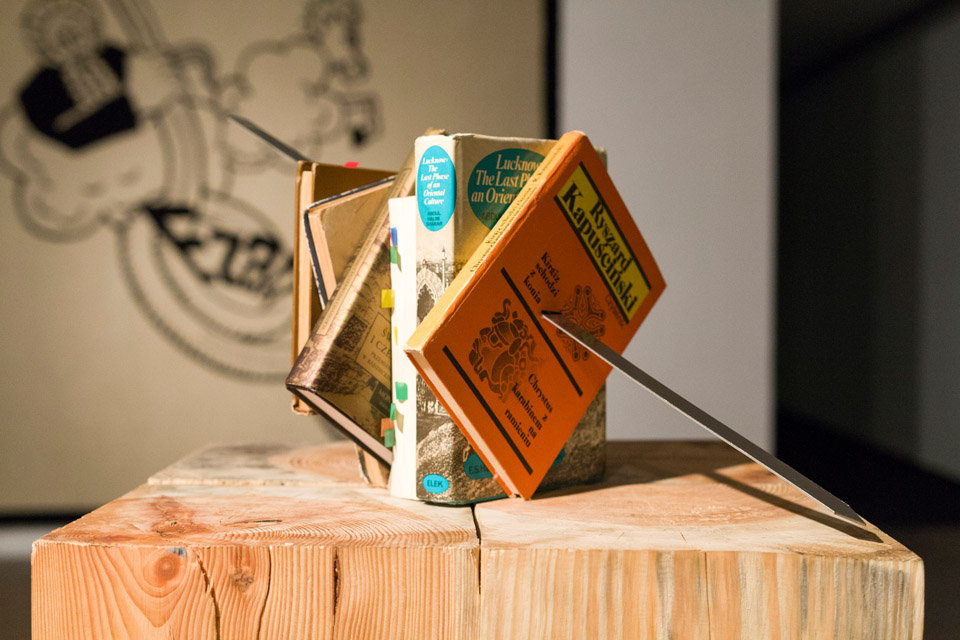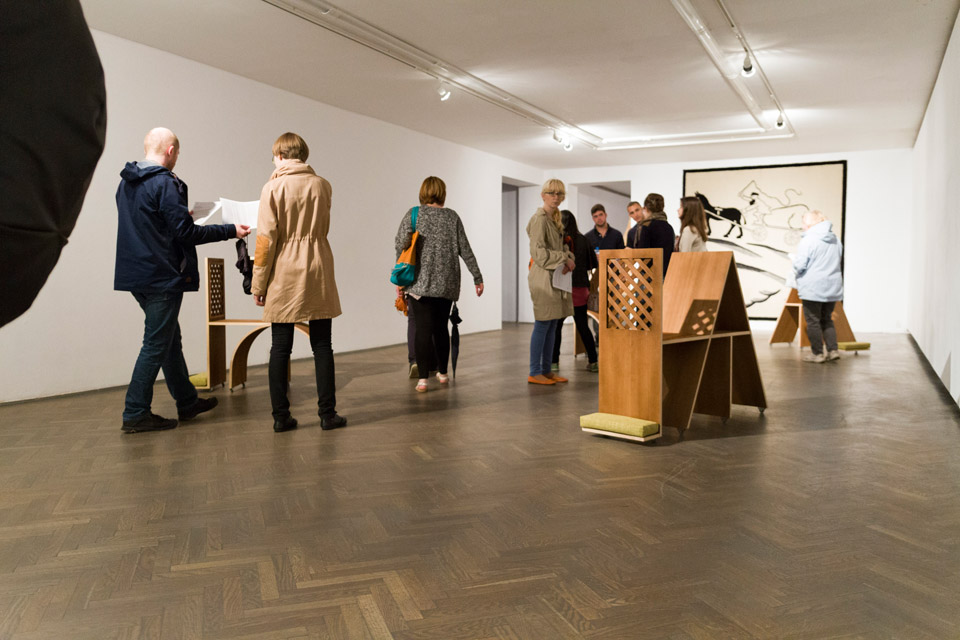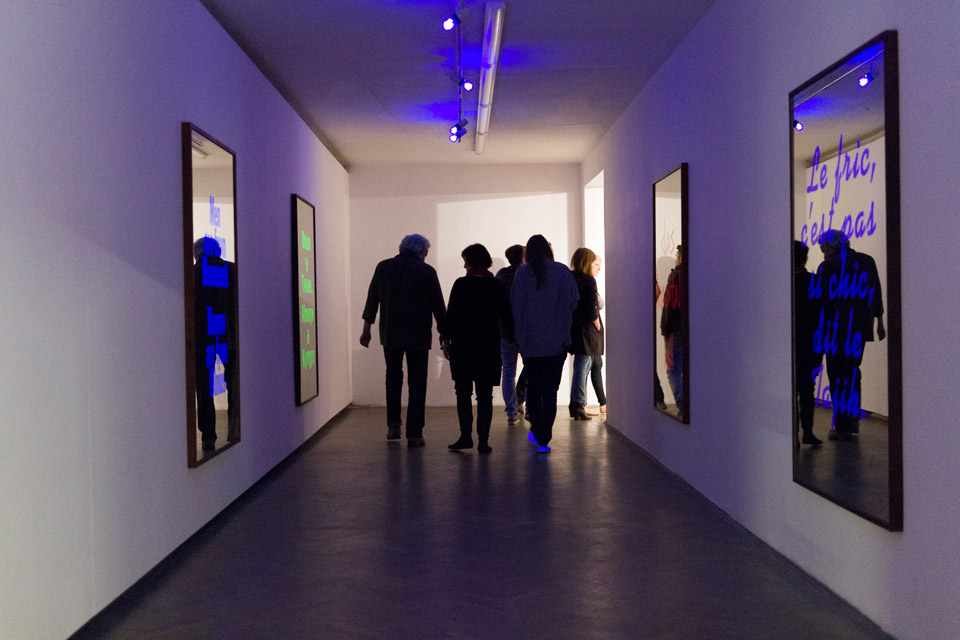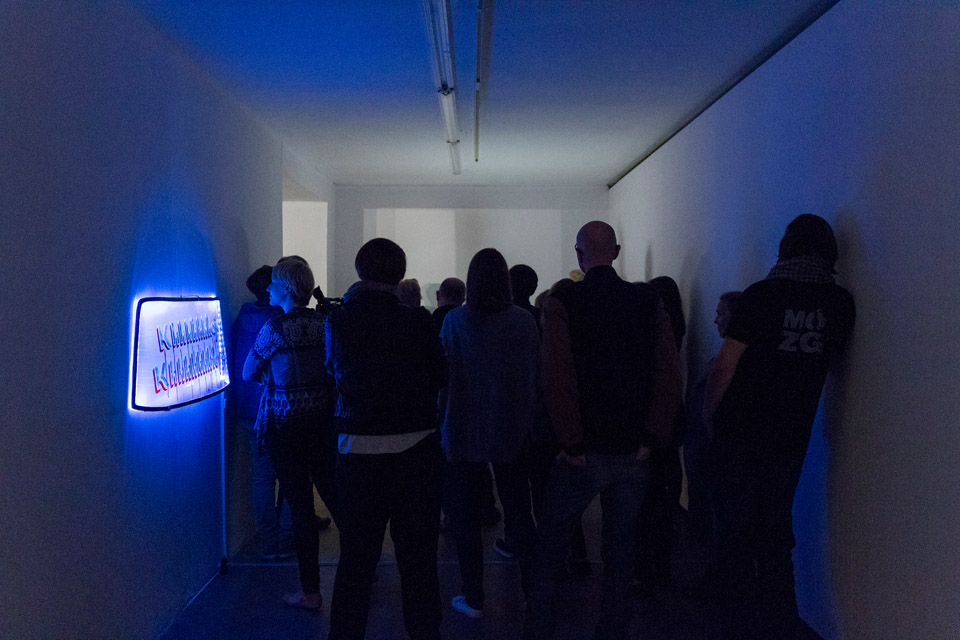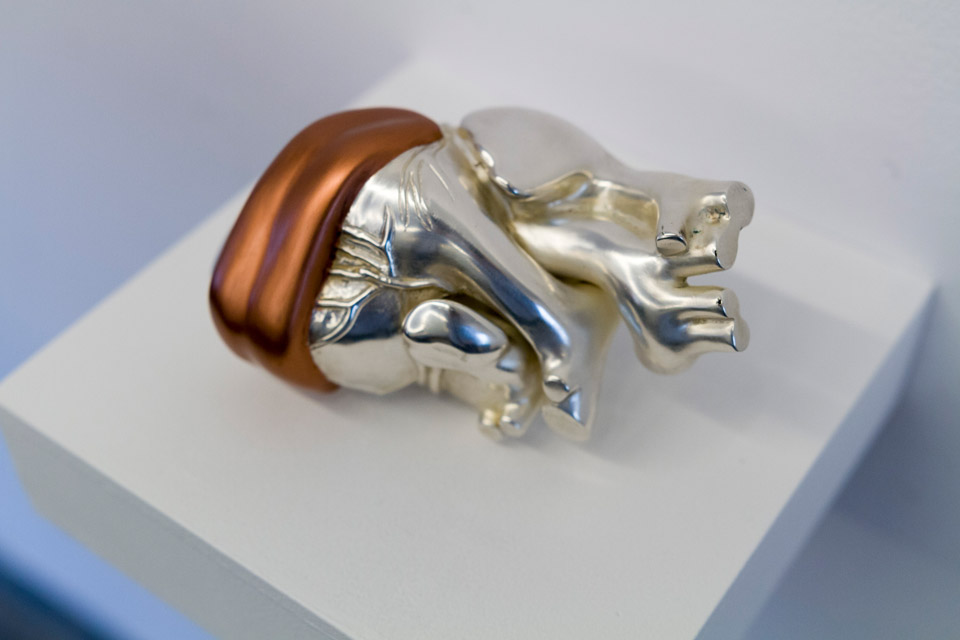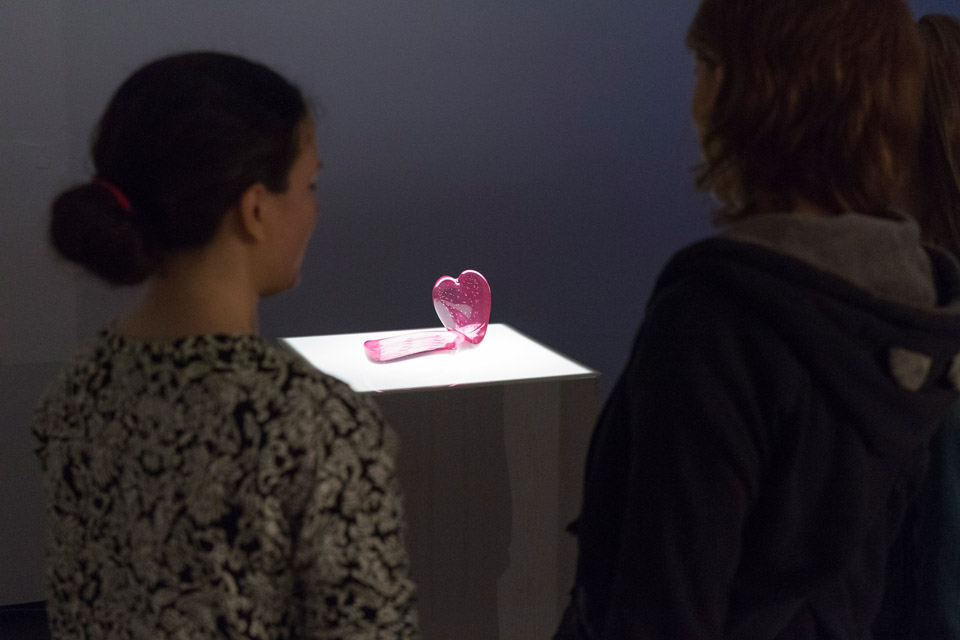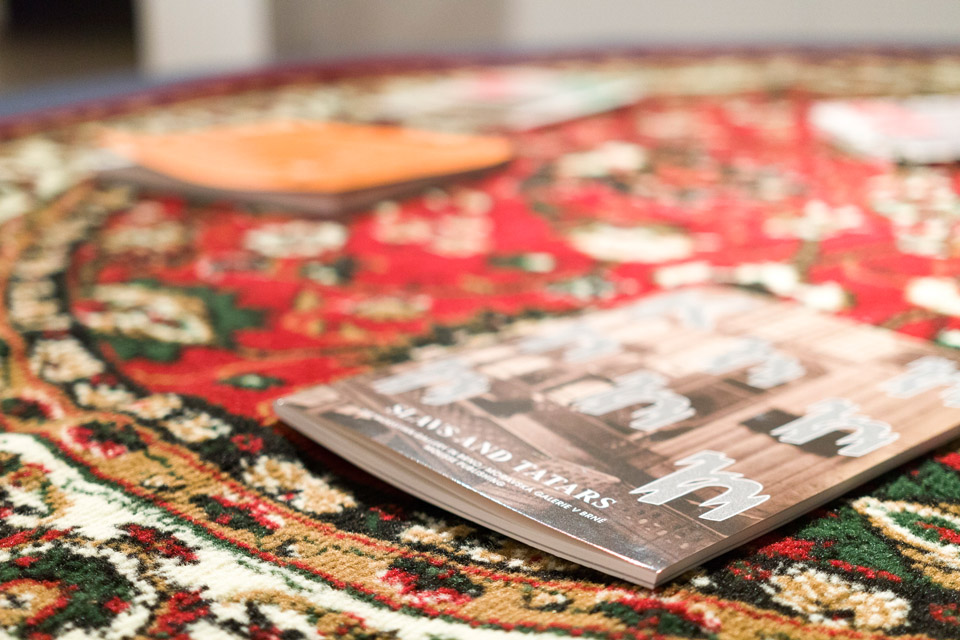Slavs and Tatars – Long-legged linguistics. The Naughty Nasals
Slavs and Tatars is an art collective whose installations, lecture-performances, publications and artist multiples contemplate otherwise little-known affinities, syncretic ideas, belief systems and rituals among peoples of the Caucasus, Central Asia and Eastern Europe. Pursuing an unconventional research-based practice, the group identifies the “area east of the former Berlin Wall and west of the Great Wall of China known as Eurasia” as the focus of their multidisciplinary practice.
Their projects address the transmission and hybridization of traditions, politics and language within the region while negotiating expansive topics such as the fall of Communism, the Iranian Revolution, and nationhood within the Caucasus, to name a few. Associating incompatible and contradictory themes and forms, they proceed with an irreverent approach—deploying wit and wordplay to gain entry into otherwise complex and often incendiary subjects. To communicate the many threads of their inquiry, the collective creates inviting environments where visitors can linger and experience the art objects, which themselves draw upon a wide range of sources, including regional craft traditions and pop-art.
From their first publication Kidnapping Mountains (Book Works, 2009) to the more recent Khhhhhhh (Mousse/Moravian Gallery 2012), the collective has consistently turned to language as a tool for disruption, humor, and unexpected meaning. By challenging an understanding of language as exclusively rational or semantic, Slavs and Tatars emphasize its potential to be affective and sensual, concealing as much as it reveals—even becoming a platform for sacred wisdom, rather than a mere vehicle for secular knowledge or profane everyday use.
The Naughty Nasals
For Arsenal, Slavs and Tatars present The Naughty Nasals, an investigation into language as a source of political, metaphysical, and sensuous emancipation. With their trademark mix of high and low registers, ribald humor and esoteric discourse, the artist collective addresses the thorny issue of alphabet politics—the attempts by nations, cultures, and ideologies to ascribe a specific set of letters to a given language—with a series of sculptures, installations, textiles, and printed matter.
The march of alphabets has accompanied that of empires and religions: the Latin script along with the Roman Catholic faith, Arabic with the rise of Islam and the Caliphate, as well as Cyrillic with Orthodox Christianity and subsequently the USSR. But here, it is not peoples or nations that are liberated, but phonemes from attempts to restrain and rein them in.
The Naughty Nasals underlines Białystok’s geographic context, near the eastern frontier of Poland and its historic proximity to Tatar populations, by looking not only at the Slavic but also Turkic languages vis-à-vis Soviet and Kemalist language politics, respectively. Soon after the Russian Revolution of 1917, the Bolsheviks found themselves inheritors to a Russian Empire with sizeable territories of largely Muslim, Turkic-speaking populations. Lenin believed the Revolution of the East – meaning the modernization and political emancipation of Muslims – passed through the Latinization of their Arabic-script languages. By 1939, Turkey had also latinized and Stalin, fearing the spectre of pan Turkism, Cyrillicized many of the same languages. Finally in 1991, with the fall of the USSR, most of the Muslim former Soviet republics switched back to Latin. Today, debates as perennial as faith and state or urgent as 19th century nationalism use and abuse language, from Istanbul to Sebastopol.
Three new installments in Slavs and Tatars’ Love Letters series of carpets address the issue of manipulation of alphabets across Arabic, Latin and Cyrillic, through the Russian Revolution’s most well-known, if conflicted, poet-champion, Vladimir Mayakovsky. Lektor, a new two-channel audio work, features a selection of the 11th century Turkic epic Kutadgu Bilig (Wisdom of Royal Glory) in its original turkishwith a voice-over in Polish. The original text hails from the “mirror for princes” genre—a medieval genre of advice literature or guides for rulers shared by Christian and Muslim lands—aimed to elevate statecraft to the same level as faith and religion. The particular excerpt of Kutadgu Bilig (literally, the wisdom that brings happiness) chosen for Lektor offers advice pertaining to speech and tongues—tongues that bring fortune and bad luck, profit and loss and what it means to loosen it, hold it or stick it out. Used for films in Poland and Russia and elsewhere only for news segments, the simultaneous playback of two distinct audio tracks makes for a disruptive experience, touching on issues of legibility to authenticity and language as a form of hospitality.
The artists’ recent book Khhhhhhh (Mousse Publishing / Moravian Gallery, Brno) told the story of the throat long eclipsed by the tongue. Here at Arsenal, The Naughty Nasals addresses the nose as a site of sonorous resistance to the political and nation-building usage of scripts, or alphabets. The Ѫѫ(Wielki Jus) and Ѧѧ(Mały Jus)–nasal sounds that have disappeared from most Slavic languages but remain as ą and ę in contemporary Polish–function as mobile confessionals, to one of the lesser known, aborted attempts to Cyrillicize the Polish language. The organs of language represent a distinct zone of libidinal linguistics: the teeth, or lips, mouth, tongue, neck, or ears. The Naughty Nasals looks at these erogenous areas as a space of rupture, or break from the norm.
The new body of work amongst others all address issues such as power, submission, domination, and resistance—not through the saturated, demoralized lens of politics, but rather through the ecstatic perspective of sexuality.
co-financing by The Ministry of Culture and National Heritage

Media patrons

Slavs and Tatars

PLAN YOUR VISIT
Opening times:
Thuesday – Sunday
10:00-18:00
Last admission
to exhibition is at:
17.30
